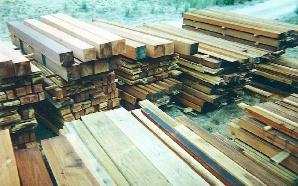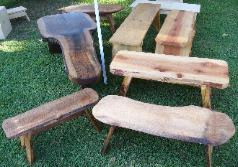When it comes to choosing lumber for your sawmill project, there are three main options to consider: common size boards, timbers or flitch cut slabs. While all three types of wood have their benefits, it’s important to consider certain factors before making your decision. Let’s explore the differences between common boards, timbers and slabs, the factors to consider when choosing what size lumber to cut your logs into, and how to make the most of your sawmill project.
Common Boards vs. Timbers: Which is Better?
Common boards like 1×12, 2×4 and 2×6 are typically thinner and narrower than timbers, and are often used for fencing, decking, and other common projects. They’re also less expensive than timbers, which makes them a popular choice for homeowners and DIY enthusiasts. However, common fence boards may not be as durable as timbers and may need to be replaced sooner.
Timbers, on the other hand, are thicker and wider than fence boards and are often used for building structures like timber frame barns, gazebos, bridges, and retaining walls. They’re also more expensive than common size boards but are generally more durable and long-lasting. If you’re looking for lumber that will stand the test of time, timbers may be the better choice.
Factors to Consider When Sizing Lumber
When choosing between common dimensions and timbers, there are a few factors to consider. First, you’ll want to think about your project’s size and scope. If you’re building a small fence or deck, common size boards may be sufficient. However, if you’re building a larger structure or need more durable wood, timbers may be a better choice.
You’ll also want to consider your budget. Fence boards are always less expensive than timbers, which may make them the better choice if you’re on a tight budget and shopping at the lumber yard. However, when milling your own lumber if durability is a top priority, it definitely worth cutting larger size boards and timbers.
Finally, you’ll want to consider the type of wood you’re using. Different types of wood have different qualities and may be better suited for certain projects. For example, cedar, redwood and cypress are often used for outdoor projects because it’s naturally resistant to rot and insects.
Flitch Cut Slabs vs. Common Size Lumber and Timbers
Flitch cut or “slabs” refers to one or more natural edges that are left when cutting a log. Live edge slabs have become a trend in DIY rustic furniture such as tables, countertops and benches. Because this type of lumber is not found at the lumber yard it has a much greater value than common size lumber.
One of the main benefits of flitch cut slabs is the rustic character that just cant be found at the big box stores. Another advantage of flitch cut slabs is the unique one of a kind table or furniture when building your DIY home projects. And then there is the bragging rites that come from using your own trees and turning them into a family keepsake.
Making the Most of Your Sawmill Project
No matter which type of lumber you choose to cut, it’s important to make the most of your sawmill project. Choose a professional sawyer for your milling who will operate in the most efficient way possible and get the most valuable lumber from your logs.
By following these tips, you can ensure that you get the most out of your sawmill project and produce high-quality lumber that will last for years to come.
To summarize, choosing between fence boards, timbers or flitch cut slabs ultimately depends on your project’s unique needs , the species of logs you have, and your personal preferences. By considering the factors mentioned above and making the most of your sawmill project, you can create beautiful and durable woodwork that will stand the test of time and bring gratifying rewards for generations that follow.